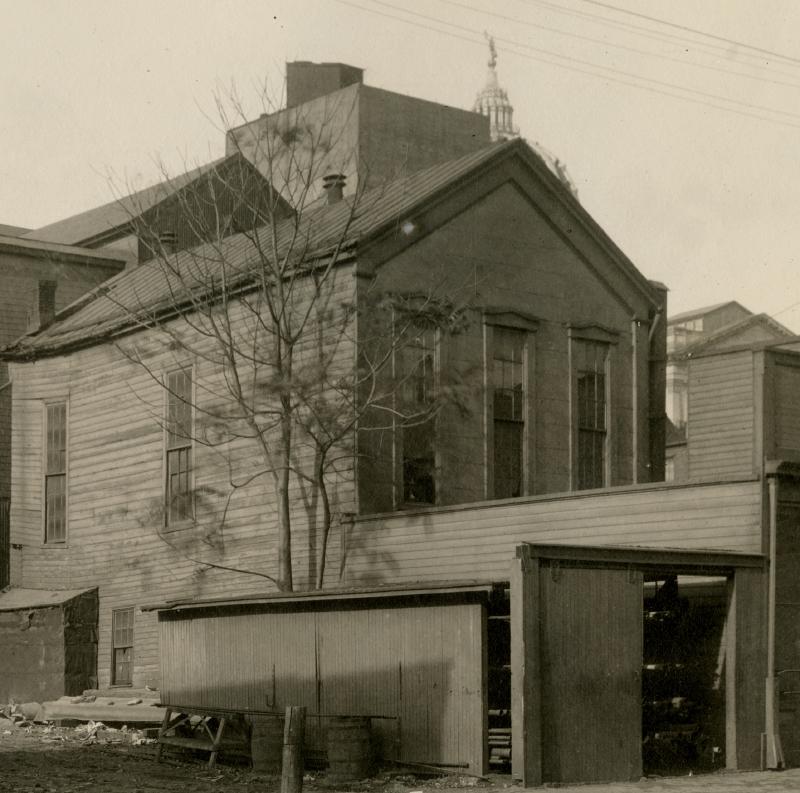
During the nineteenth century, the African American churches of Harrisburg were much more than houses of worship; they were agents of enfranchisement and liberation.
It was January 1, 1863. To many residents of Harrisburg, it was likely just a regular New Years’ Day, but to African Americans, it held a far greater significance: it was the day that the newly passed Emancipation Proclamation was set to take effect. That evening, three chosen men met at the Bethel A.M.E. Church on Short Street to write a response to this momentous occasion. Not only did they encapsulate the joy and approval that African Americans felt, but also the anger and frustration that stemmed from two centuries of racial discrimination and dehumanization, warranting such a proclamation in the first place. By the end of that night’s worship service, the response was approved via a vote, simultaneously celebrating a win for African Americans worldwide while also acknowledging that work was far from over, work that Black churches in Harrisburg had already been doing for decades and would continue to do throughout the years to come.
The resolution composed by schoolteacher John Wolf, prominent community member Samuel Bennett, and Reverend David Stevens of the Wesley A.M.E. Zion Church may have put into words what Harrisburg’s African American community felt about slavery, but their actions spoke much louder. Despite its small stature, under the leadership of Reverend Mifflin Gibbs, the Bethel A.M.E. Church “included many of those who did man's work by day and the Lord's work by night, maintaining an active presence in that shadowy operation known as the Underground Railroad.” Understanding the difficulties that resulted from escaping slavery, the church provided housing for freedom seekers and found them work in the local coal, iron, and steel industries, helping them to settle into their new lives up north, whether Harrisburg was a new home or merely a stop on the road. Later, following the ratification of the 15th amendment in 1870, Bethel A.M.E. took things a step further by registering new voters and offering classes in civic education, ushering in a new era of voting rights for the city. Although the Short Street church did copious amounts of work for the antislavery movement as well as in furthering the rights of African Americans in general, it was not alone in this regard.
At the corner of Third and Mulberry Streets sat the small log building that housed the Wesley Union Church. Its neighborhood of “Judy’s Town” was a key spot for African American social and spiritual life, so it is unsurprising that it was likely the first of Harrisburg’s regular Underground Railroad stops, becoming the epicenter of the movement in the city by 1829. As at Bethel A.M.E., many freedom seekers found refuge at Wesley Union, which was without a doubt a direct result of the sermons that congregants heard during worship services, filling them with a sense of love and duty that inspired them to put everything on the line in order to help total strangers. One early Wesley Union congregant, William “Pap” Jones, was known for being one of the most efficient Underground Railroad conductors in the area, using his extensive knowledge of routes leading north in order to create guides for freedom seekers. Another congregant, Harriet McClintock Marshall, assisted freedom seekers by providing them with shelter, food, and clothing before ushering them to their next stops on their journeys to freedom, her husband’s status as a former enslaved man likely contributing to her determination in doing so.
In fact, Harrisburg’s African American community was participating in Underground Railroad activities long before the Underground Railroad was established. For instance, Reverend David Stevens of Wesley Union Church encouraged his congregation to “strive for self-reliance and community,” which they executed by assisting the needy in whichever ways possible. The “needy,” of course, included enslaved people who had escaped from their bonds and were settling up north. These actions led to the formation of a network of sorts connecting different members of the Harrisburg African American community throughout the 1820s and 1830s under a common goal. Stevens and fellow African American minister Jacob D. Richardson publicly denounced slavery and opened their church to anti-slavery meetings and events, even attempting to start their own anti-slavery newspaper–Zion’s Wesleyan Connection–in 1841. The church kept growing to the point where their small log building in Judy’s Town was no longer big enough, leading founding pastor Stevens to seek out a new location at the corner of Tanner’s Alley and State Street, east of the Capitol building, where the congregation moved in its entirety in 1839. The construction of new buildings on the same site in 1862 and then again in 1894 demonstrate the success that Wesley Union experienced throughout the 19th century as it never backed down from adversity.
Churches such as Bethel A.M.E. and Wesley Union played a pivotal role in the organization and planning of Harrisburg’s Underground Railroad. From holding recruitment meetings for Black Civil War regiments to hosting national-scale anti-slavery speakers (see article on Douglass and Garrison visit), houses of worship stood at the forefront of the city’s efforts to resist slavery and to support freedom seekers. Indifferent or discriminatory residents of Harrisburg may have viewed these African American men and women as “radical” or “defying the law,” but in reality, they were simply doing their part as Men of God.
Images




